 |
| By Visitor Centre - 31 January 2016 |
Although I first photographed snowdrops in late December, most flowered at their normal time in the first two months of the year.
A lot of the snowdrops in the park are in the garden area, which is at its best at this time of the year. For that reason, I will deal with the garden in my next post, and concentrate on the flowers in the main area of the park in this post.
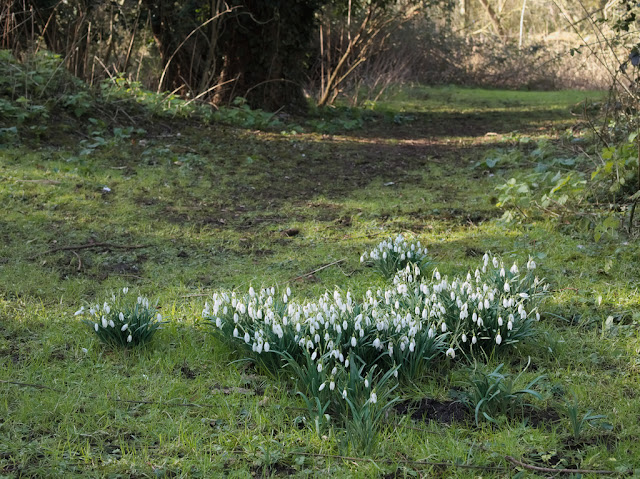 |
| Tomkins Mead - 24 February 2016 |
In
the park itself, many of the larger clumps are beside the path
leading through Tomkin's Mead. In writing this, I realise how many
of the photographs I have published on this blog have been from the
margins of the paths, the lakes or the woods. What makes the margin
so interesting? There is the aesthetic aspect of course. A group of
snowdrops flowering beside a path to lead the eye further into the
picture is undoubtedly pleasing. As in this image, the path also
serves to guide the viewer around the wider environment of the
flowers.
But
I think it goes beyond this, and that the biodiversity is greater at
the margin. Take, for example, a common situation in the country
park: a path running beside a wood. In the wood, the dense canopy
tends to block the sunshine and stifle plant life beneath. On the
other hand, the centre of the path is trampled down with only the
toughest grasses surviving. It is in the intervening margin that
plants can thrive in semi shade without being trampled down. This
photograph dramatically illustrates how little can grow beneath the
trees: these three clumps of snowdrops have the ground almost
entirely to the themselves.
 |
| Tomkins' Mead - 16 February 2016 |
There
may not be that much around to photograph at this time of year, but
what there is has made me think, not only of biodiversity but also
the difference between human vision and what the camera records. I
am particularly interested in the way the brain will focus on one
particular aspect of a scene at the exclusion of almost everything
else. The object of interest seems to fill the whole field of
vision. When presented with a 2D representation of the same scene,
the brain seems to take an almost perverse pleasure in focussing on
everything but the intended object of the image.
Take
this picture of snowdrops growing on a small bank west of Todd's Pit.
In the wild, I saw a bank with a row of snowdrops growing surrounded
by grass and trees, to which, except for a cherry plum flowering in
the background, I paid no attention whatsoever. In a way, they did
not exist, they went unseen. In the picture, the nettles, the broken
branches, the twigs growing up, and even the dead leaves left hanging
on the dead stalks of last year's growth all demand my attention. No
longer are these 'features' to be ignored and looked past, they have
become very insistently part of the story of the picture. Since this
story, of snowdrops growing amongst trees and the detritus of last
summer's growth, is the story I want to tell, I have published the
picture. To clean the picture up, I would have been left with just
another pretty picture of snowdrops, that would say nothing about
snowdrops growing in Milton Country Park. But I am left wondering,
why the intellect focusses so selectively in the wild, and so
non-selectively on a picture.
Cherry Plum
This
same selective / non-selective viewing also affects my next subject.
When I first tried to photograph cherry plum blossom last March, I
described the flowers as playing hide and seek with the camera. This
year the blossom is at least a month earlier, but is still every bit
as elusive. This tree appeared, at the time of taking, to be a mass of white. Somehow, the act of
photographing the tree shrivelled the flowers! No longer is there a
myriad of blossom, but more a smattering of small white flowers.
To
fully do justice to such a bush in a photograph, you need a bush or
bushes big enough to photographed at a such a distance that the space
between the flowers is no longer visible. Just such a situation is
here on the path through Tomkin's Mead. It is an archetypal country
park scene with the path running between flowering trees that meet
overhead to form a tunnel.
Daffodils
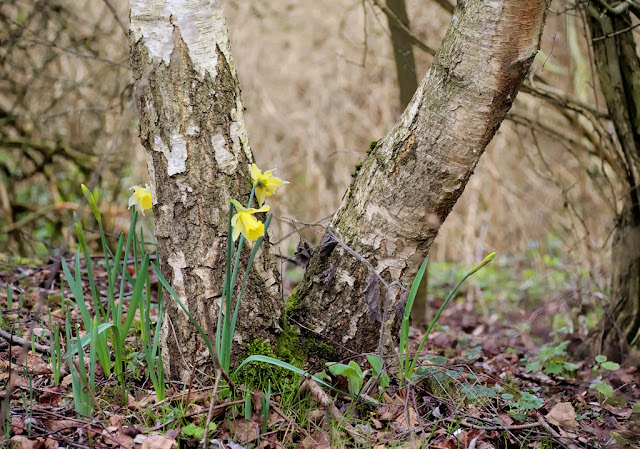 |
| By Car Park - 31 January 2016 |
The other spring flower much in evidence in the park is the daffodil. These are scattered around the park, mostly in small clumps, like these growing among the birch trees by the car park.
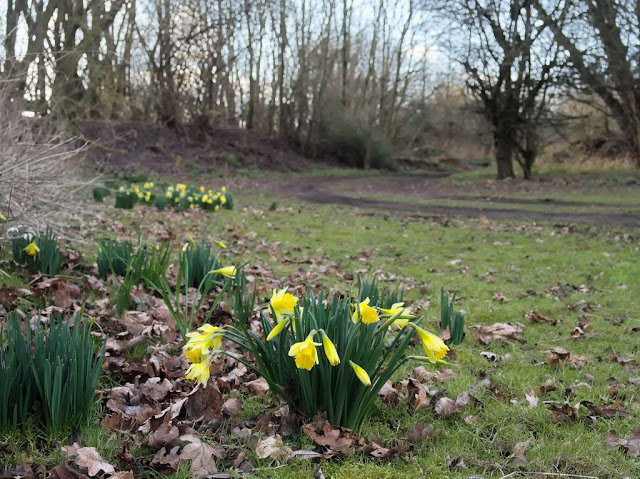 |
| Access Road - 24 February 2016 |
Finally, in this last image, we have flowers - daffodils - growing beside a path. These daffodils, with their new growth and bright flowers, are in stark contrast to the cold bareness of the surrounding landscape.
Next: The Garden
Next: The Garden
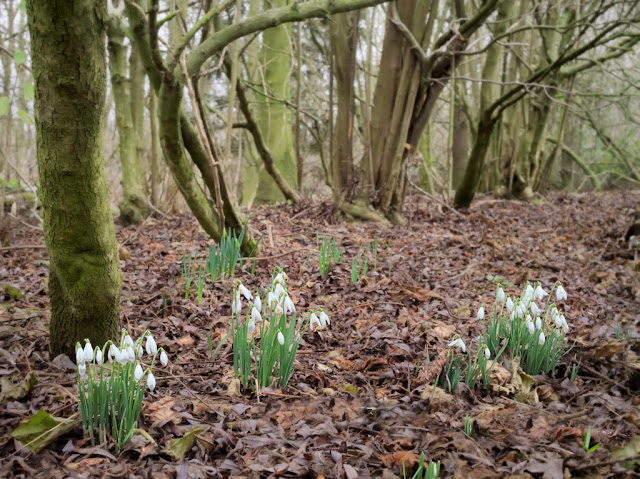
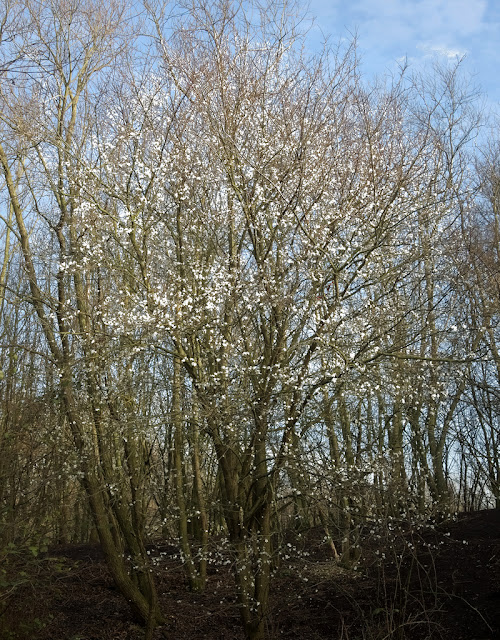

No comments:
Post a Comment